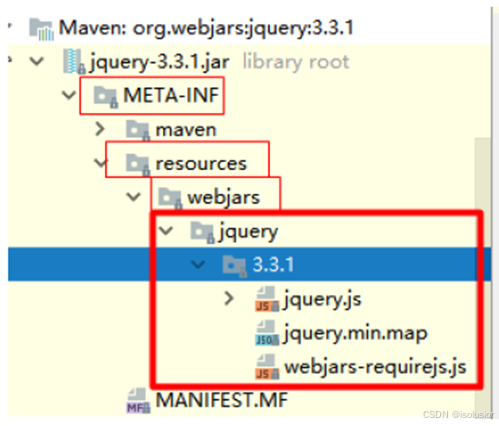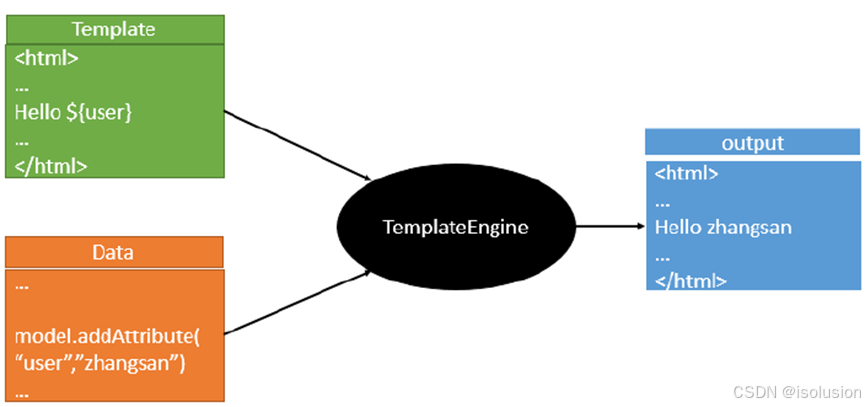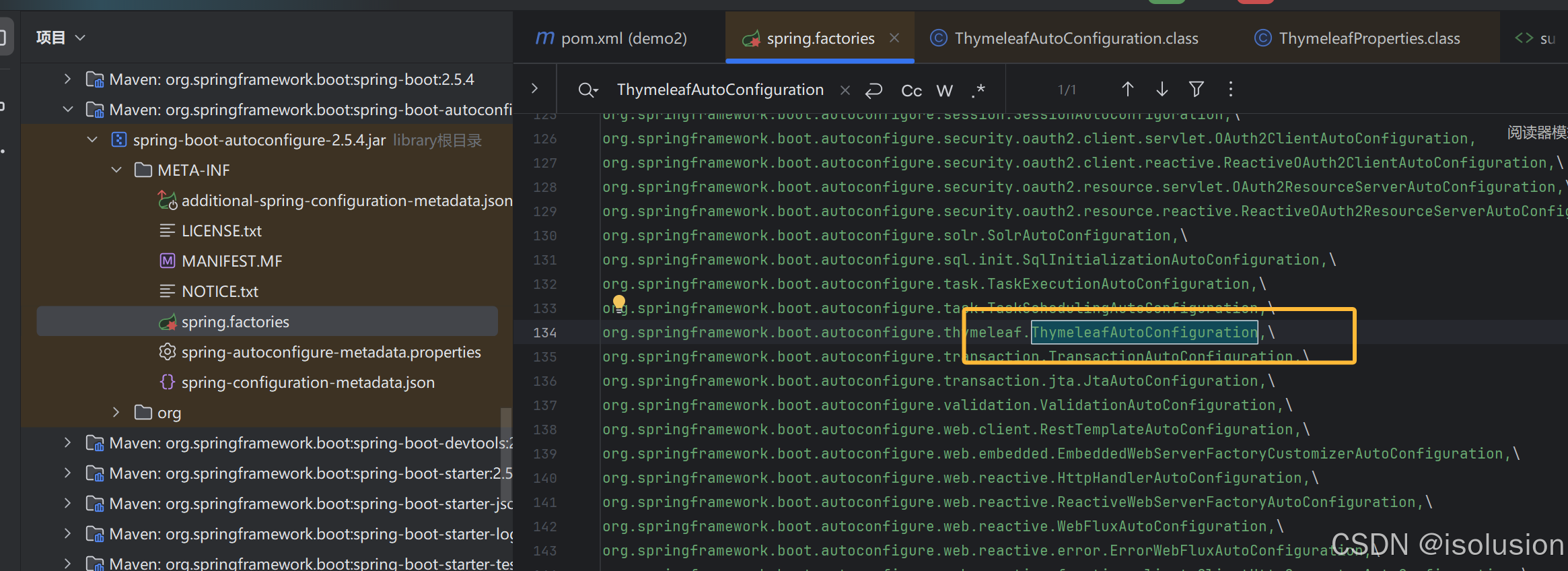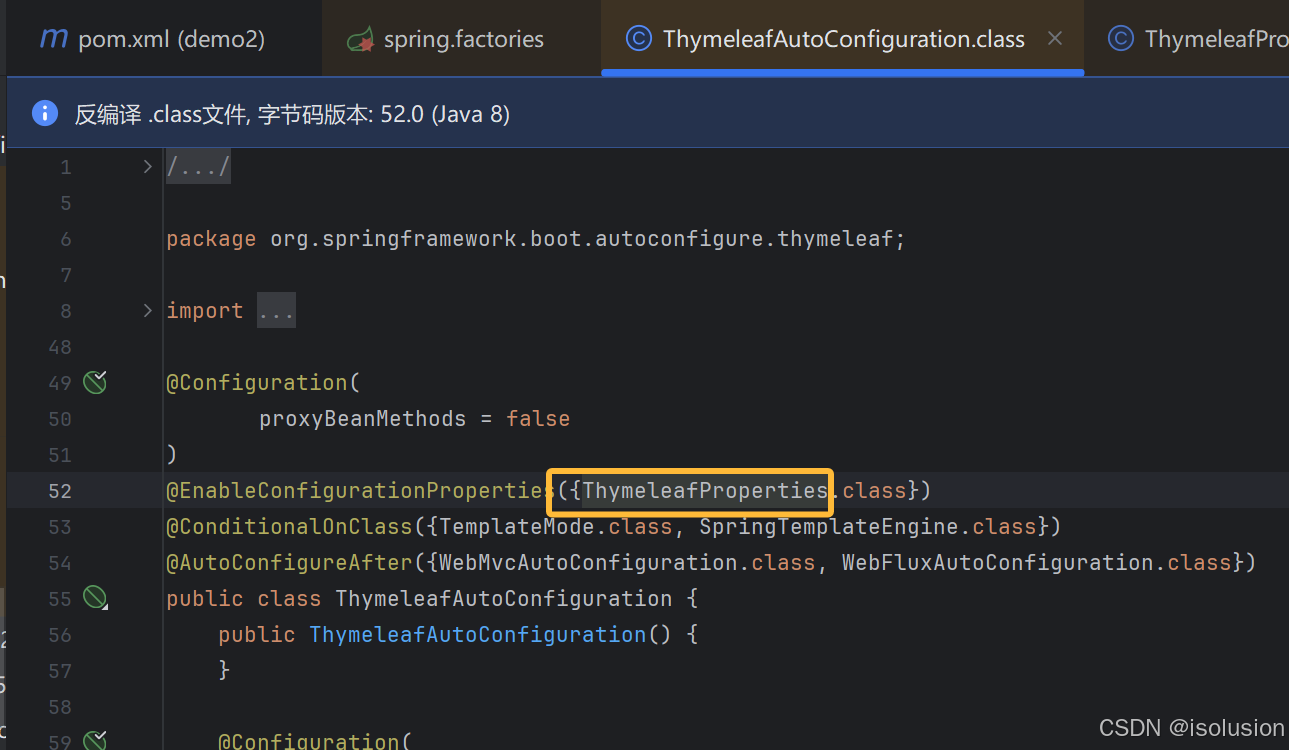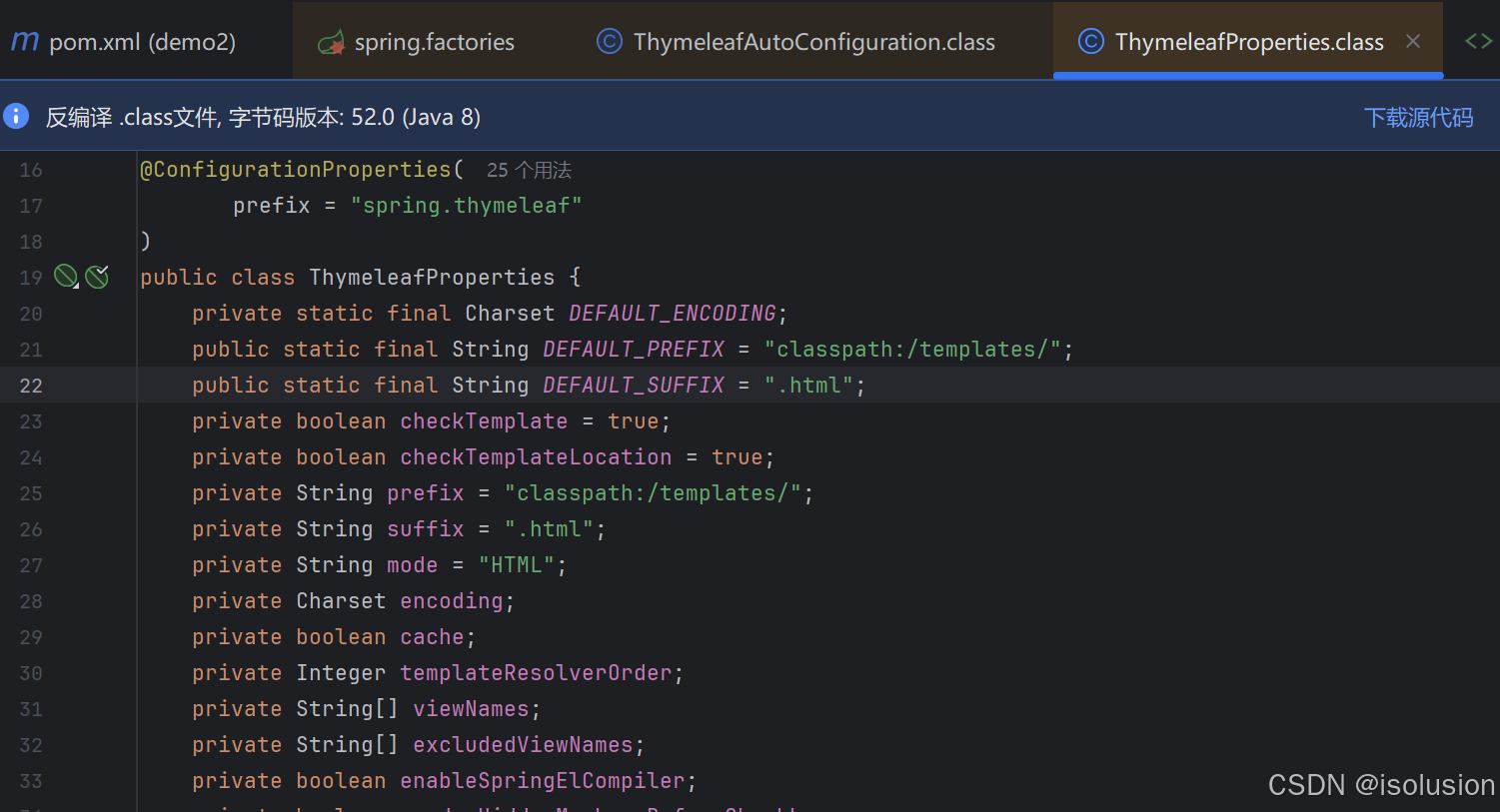Springboot中的web以及模板引擎
一.简介
使用SpringBoot;
1. 创建SpringBoot应用,选中我们需要的模块;
2. SpringBoot已经默认将这些场景配置好了,只需要在配置文件中指定少量配置就可以运行起来
3. 自己编写业务代码;
自动配置原理?
这个场景SpringBoot帮我们配置了什么?能不能修改?能修改哪些配置?能不能扩展?xxx
二.SpringBoot对静态资源的映射规则
@ConfigurationProperties(prefix = "spring.resources", ignoreUnknownFields = false)
public class ResourceProperties implements ResourceLoaderAware {
//可以设置和静态资源有关的参数,缓存时间等
WebMvcAuotConfiguration:
@Override
public void addResourceHandlers(ResourceHandlerRegistry registry) {
if (!this.resourceProperties.isAddMappings()) {
logger.debug("Default resource handling disabled");
return;
}
Integer cachePeriod = this.resourceProperties.getCachePeriod();
if (!registry.hasMappingForPattern("/webjars/**")) {
customizeResourceHandlerRegistration(registry.addResourceHandler("/webjars/**").addResourceLocations("classpath:/META‐INF/resources/webjars/").setCachePeriod(cachePeriod));
}
String staticPathPattern = this.mvcProperties.getStaticPathPattern();
//静态资源文件夹映射
if (!registry.hasMappingForPattern(staticPathPattern)) {
customizeResourceHandlerRegistration(registry.
addResourceHandler(staticPathPattern).addResourceLocations(this.resourceProperties.getStaticLocations()).setCachePeriod(cachePeriod));
}
} /
/配置欢迎页映射
@Bean
public WelcomePageHandlerMapping welcomePageHandlerMapping(
ResourceProperties resourceProperties) {
return new WelcomePageHandlerMapping(resourceProperties.getWelcomePage(),
this.mvcProperties.getStaticPathPattern());
}
//配置喜欢的图标
@Configuration
@ConditionalOnProperty(value = "spring.mvc.favicon.enabled", matchIfMissing = true)
public static class FaviconConfiguration {
private final ResourceProperties resourceProperties;
public FaviconConfiguration(ResourceProperties resourceProperties) {
this.resourceProperties = resourceProperties;
}
@Bean
public SimpleUrlHandlerMapping faviconHandlerMapping() {
SimpleUrlHandlerMapping mapping = new SimpleUrlHandlerMapping();
mapping.setOrder(Ordered.HIGHEST_PRECEDENCE + 1);
//所有 **/favicon.ico
mapping.setUrlMap(Collections.singletonMap("**/favicon.ico",
faviconRequestHandler());
return mapping;
}
@Bean
public ResourceHttpRequestHandler faviconRequestHandler() {
ResourceHttpRequestHandler requestHandler = new ResourceHttpRequestHandler();
requestHandler.setLocations(this.resourceProperties.getFaviconLocations());
return requestHandler;
}
}
1. 所有 /webjars/** ,都去 classpath:/META-INF/resources/webjars/ 找资源;
webjars:以jar包的方式引入静态资源;WebJars - Web Libraries in Jars
localhost:8080/webjars/jquery/3.3.1/jquery.js
在访问的时候只需要写webjars下面资源的名称即可
org.webjars
jquery
3.3.1
2. "/**" 访问当前项目的任何资源,都去(静态资源的文件夹)找映射
"classpath:/META‐INF/resources/",
"classpath:/resources/",
"classpath:/static/",
"classpath:/public/"
"/":当前项目的根路径
localhost:8080/abc ===》 去静态资源文件夹里面找abc
3. 欢迎页,静态资源文件夹下的所有index.html页面;被"/**"映射;
localhost:8080/ 找index页面
三.模板引擎
一些常见的模板引擎:
JSP、Velocity、Freemarker、Thymeleaf
SpringBoot推荐的Thymeleaf;
语法更简单,功能更强大;
1.引入thymeleaf
在pom.xml中引入
org.springframework.boot
spring-boot-starter-thymeleaf
从spring父文件中能看到Springboot2.0.1所使用的thymeleaf版本是3.0.9
springBoot启动的时候会自动配置
org.springframework.boot.autoconfigure.thymeleaf.ThymeleafAutoConfiguration
从ThymeleafAutoConfiguration的源代码中我们可以得知ThymeleafProperties
中配置了Thymeleaf的规则
public class ThymeleafProperties {
private static final Charset DEFAULT_ENCODING;
public static final String DEFAULT_PREFIX = "classpath:/templates/";
public static final String DEFAULT_SUFFIX = ".html";
private boolean checkTemplate = true;
private boolean checkTemplateLocation = true;
private String prefix = "classpath:/templates/";
private String suffix = ".html";
private String mode = "HTML";
private Charset encoding;
private boolean cache;
我们使用html作为模板,而且默认的前缀是放在classpath:/templates/下,后缀是.html
当然这些属性我们都可以通过application.properties来修改。我们采用默认即可。
示例:
1.在templates下创建一个success.html
2.创建一个TestController提供一个访问的方法
@Controller
@RequestMapping("/TestController")
public class TestController {
@RequestMapping("/success")
public String hello(Model model){
model.addAttribute("hello","zhangsan");
return "success";
}
}
3.在thymeleaf模板中取值(success.html中)
Title
4.在application配置文件中添加端口号
server: port: 8085
2.Thymeleaf语法
Thymeleaf 教程中文文档链接 Thymeleaf 教程
2.1标准表达式语法
(1)变量表达式
变量表达式即OGNL表达式或Spring EL表达式(在Spring术语中也叫model attributes)。如下所示: ${session.user.name}
它们将以HTML标签的一个属性来表示:
th:text="${book.author.name}">
(2)选择(星号)表达式
择表达式很像变量表达式,不过它们用一个预先选择的对象来代替上下文变量容器(map)来执行,如下: *{customer.name}
被指定的object由th:object属性定义:
th:object="${book}">
...
th:text="*{title}">...
...
(3)文字国际化表达式
文字国际化表达式允许我们从一个外部文件获取区域文字信息(.properties),用Key索引Value,还可以提供一组参数(可选)
#{main.title}
(4)URL表达式
URL表达式指的是把一个有用的上下文或回话信息添加到URL,这个过程经常被叫做URL重写。不需要指定项目名字
@{/order/list}
URL还可以设置参数:
@{/order/details(id=${orderId})}
让我们看这些表达式:
href="main.html" rel="external nofollow" th:href="@{/main}" rel="external n
2.2表达式支持的语法
字面(Literals)
- 文本文字(Text literals): 'one text', 'Another one!',…
- 数字文本(Number literals): 0, 34, 3.0, 12.3,…
- 布尔文本(Boolean literals): true, false
- 空(Null literal): null
- 文字标记(Literal tokens): one, sometext, main,…
文本操作(Text operations)
- 字符串连接(String concatenation): +
- 文本替换(Literal substitutions): |The name is ${name}|
算术运算(Arithmetic operations)
- 二元运算符(Binary operators): +, -, *, /, %
- 减号(单目运算符)Minus sign (unary operator): -
布尔操作(Boolean operations)
- 二元运算符(Binary operators):and, or
- 布尔否定(一元运算符)Boolean negation (unary operator):!, not
比较和等价(Comparisons and equality)
- 比较(Comparators): >, =,


